Year 1, Lesson 1.1: An Introduction to The Good Project Developmental Series
Unit Learning Goal
Students will understand “good work” through excellence, ethics, and engagement.
Lesson Goal
Students will be able to create classroom norms and practice initial self-reflection using thinking routines.
Assessment
Monitor students’ discussion and questions for demonstration of understanding regarding the purpose of The Good Project Developmental Series.
Observe students’ level of comfort with reflection and sharing activities. (More scaffolding and practice may be needed, depending upon your classroom climate.)
Analyze Exit Tickets to see whether students have remaining questions or confusion.
Casel Alignment
Self-Awareness, Relationship Skills, Identity, Belonging, and Curiosity
Portfolio Documentation
Resources
Optional Video: An Overview of The Good Project
Optional Instructor Guide: Establishing Community Norms and Expectations Cornell University’s Center for Teaching Innovation
Prerequisites
None
Total Time
45 minutes
Instructions
1. Opening: Why are we learning about “good work?” [10 minutes]
Share the handout (or present on the class projection screen) “An Introduction to The Good Project Developmental Series” with students.
Read through the handout together as a class, making sure to give students a chance to ask questions along the way.
OPTIONAL
Show the 3-minute video below, An Overview of The Good Project.
2. Practice Discussion Skills. [10 minutes]
The following activities are suggestions for how to foster community and encourage open dialogue in the classroom. Please feel free to select other activities that best serve your specific classroom and students.
Explain to students that in this course, there will be a lot of conversations with peers 1-1, in small groups, and as a class. In part, this is a way for them to work out their own ideas of what “good work” means to them but also learn how others may think differently. Learning how to have constructive conversations is a valuable skill for school, work, and life.
Select one of the activities described below to give students a sense of the types of discussions they will have while learning about good work [10 minutes]
-
Split the class into pairs of 2.
Explain to students that they will be working in pairs for the next 5 minutes to answer the following questions:
What is self-reflection?
Why is self-reflection important?
Explain to students that after the activity you will be calling on individuals to explain their partner’s thinking, as opposed to sharing their own thoughts.
Take 5 minutes, as a class, to come together and share out. Remember to ask students to share their partner’s thinking, not their own ideas.
-
This game requires students to read the body language of others and make eye contact, as students must anticipate who will speak first.
Playing The Game [7 Minutes]
Optional: Break the class into groups of between 5–10. Students should be able to face one another, ideally in a circle.
Students recite the alphabet aloud, taking turns saying one letter at a time.
There is no discussion or signals about who will go first, next, etc. Students must pay close attention to one another, making sure that everyone says at least one letter during the game.
Allow the class to fail a few times, having students speak over one another, breaking down to explain/talk, etc.
Class Reflection [3 minutes]
Ask the class to come back together and share their thoughts on the activity. Ask the class:
What did you notice during this activity?
What strategies worked? Which did NOT work?
This is a great way to warm up before larger class discussions and something you can use throughout the year.
-
Split the class into pairs of 2. If possible, try to make pairs of students who do not know one another well.
Set a timer for 60 seconds.
Students will face one another and take turns each speaking about themselves, giving their partner their biography for 60 seconds.
Tell students not to feel pressured to share any details they don't feel comfortable sharing; they can choose what elements of their personal histories they'd like to mention.
During that time, the partner must not speak. They are to listen only.
After the first minute, stop the conversations and explain that students will now swap roles, with the speaker becoming the listener and vice versa.
Once the 60-seconds are up, stop the conversations.
Come back together as a class. Call on students to share what they learned about their partner (not themselves!)
Next, switch up the pairs. Each student should be paired with a new partner.
Complete the two rounds of biography sharing with these new partners.
Come back together as a class. Students should share their reactions to the activity.
Discussion Questions:
What changed in their biography from the first time they spoke to the second?
How did it feel to only listen and not react to their partner's spoken biography?
How did it feel to speak for an entire minute about yourself without any feedback?
3. Portfolio and Rubrics. [10 minutes]
Explain to students that while a lot of the activities in class will involve discussion and working with others, you will now go over how you will be collecting and assessing the individual work they do throughout the course.
Describe to students what The Good Work Portfolio will be used for:
The Good Work Portfolio is a place to collect your classwork, homework, and other items that demonstrate your thinking, and to hold it all in one place. You and your teacher will review your portfolio at the end of each unit, to assess how your work and thinking is evolving.
The Good Work portfolio can be hardcopy (e.g., a folder, binder or notebook) or electronic (e.g., a Google drive or SharePoint folder), or any form that is convenient for the educator and students.
Share with students the list below of what should be included in The Good Work Portfolio.
1. All journal entries and other written reflections.
2. All completed worksheets.
3. All completed homework assignments.
4. Notes from class activities.
5. A metacognitive artifact in which students look at their portfolio at the conclusion of the program and reflect on their personal learning journey (e.g., written reflection, concept map, video, etc.).
6. Any other material that a student may feel is tied to or is a representation of their understanding of “good work” (e.g., images, objects, etc.).
Next, share with students the Good Work Portfolio Checklist. This checklist includes all activities expected to be collected in the portfolio. Each student should save their checklist in the same folder as their completed assignments so that they can reference the list and make note of any missing assignments.
Finally, share with students the rubrics for each of the 3 units for this first year. Explain to students that they should keep these rubrics in their Good Work Portfolios, and that they will be referencing them during the end of unit self-reflections.
4. Set classroom expectations and norms. [10 minutes]
Explain to students how you will be fitting the lessons into your class (i.e., How often will you be including the lessons in your class–daily, weekly, biweekly? How are these lessons related to your class or subject matter? How will you be evaluating student work?).
Share with students your expectations of them. This can be a list you’ve already created that is projected on a screen for the class or one you write out on the board in real time. Some ideas include:
Your expectations of their participation (e.g., engaging in class discussions).
Respectful talk (there will be opportunities for those with differing opinions to engage with one another, how will differences be handled?)
Any expectations or logistics such as attendance, tardiness, staying on task, completing assignments, etc.
As part of a class discussion, invite students to add to this list.
Before the next class, summarize this list and share it back with students so that they can ask any clarifying questions.
This guide by Cornell University’s Center for Teaching Innovation is a helpful resource. Also, there are a few examples from educators who have taught these lessons below.
-
"We used a PowerPoint presentation to engage students in the focused discussion. This is the very first conversation, so to get their attention we thought it would be good to have a visual learning tool."
-
“I am in a Heritage Speaker Spanish class in which the students are learning English and comfortable in Spanish… I am allowing my students to communicate (read, write, discuss, report) in both languages. “
-
“I made a visual for my class, each pupil has one, so the pupils can tell me how they are doing without having to put their hand up. Some of our pupils were reluctant to get help before I introduced this. It works for all years.”
5. Closing and Exit Ticket. [5 minutes]
Ask students to complete the Lesson 1.1 Exit Ticket.
Explain to students that they will be doing a thinking routine: Sentence-Phrase-Word.
Students will reflect on this introductory class.
They will then write one SENTENCE that is meaningful to them, that they feel captures the core idea of today's class. (10 word limit).
From that sentence, they will extract a PHRASE (a few words) that moves, engages, or provokes them (5 word limit).
From the original sentence they wrote, they will extract the ONE WORD that captures their attention or strikes them as powerful.
Collect the handout to assess their understanding of the class.
Return this handout to students at the start of the next class so that they can add it to their Good Work Portfolios.
This lesson is based on the introductory lesson created by Katerine Hurtatiz Espinosa, an educator at Saint George’s School in Bogota, Colombia. The Good Project thanks Katerine for sharing her work with our project.
Lesson Walkthrough
Watch this short video guide for lesson specific advice from The Good Project Research Team.





